By Beth Cortright
As reputations go, insects and their close relatives have a great variety. From annoying pests and painful stingers to beautiful butterflies and fun ladybugs, insects are usually either hated or adored. Countless bugs, beetles, grasshoppers, moths, and more call the Pajarito Plateau home. If you look closely, you may find some endearing features in even the most “disgusting” or “scary” creepy-crawlies!
It’s difficult to take a quick trip through the field of entomology (the study of insects), mostly because there are SO MANY different kinds of insects — over one million species have been identified. What they all have in common is fairly simple: two antennae, six legs, and three body parts (head, thorax, abdomen).
If you come across a critter with or without these key features, you can be fairly certain that it’s not an insect. Insects are classified into categories called orders based on their identifying characteristics. For example, the largest order, Coleoptera (the Greek roots are coleo-, meaning sheath, and -ptera, which means wing), includes over 400,000 known species of beetles.
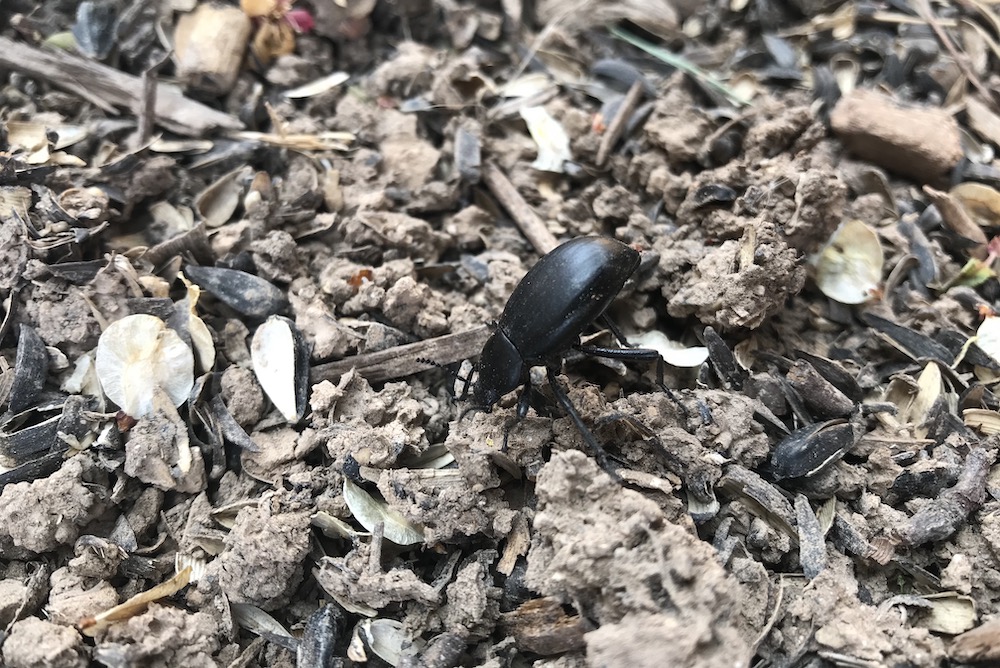
Beetles
Beetles are defined by a pair of hard covers that shield the flight wings when they’re not in use. Have you ever watched a ladybug take off? They lift up their wing covers and unfold the flight wings from underneath. Ladybugs are actually beetles, not true bugs, and they’re sometimes called ladybird beetles.
One of the most common beetles in our area is the darkling beetle or “stink bug” (also not a true bug). These are all black, rather large beetles with long legs. If they feel threatened, they’ll do a headstand and stick their rear end in the air. Some species of darkling beetles can produce a smelly liquid (hence the name, stink bug) and spray it into the air to deter predators.
True bugs are in the order Hemiptera (a translation of the name means “half-wing”). They have a triangle shape behind their head and no hard wing covers.
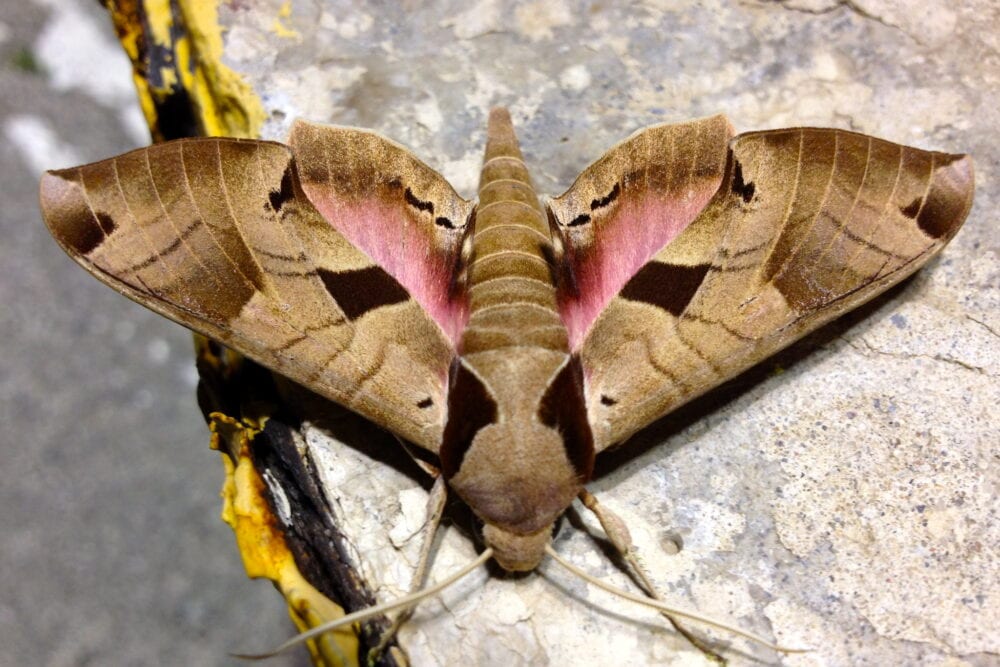
Butterflies and Moths
Lepidoptera (“scale-wing”) is the order for butterflies and moths. They all have four wings covered in tiny scales. The scales are what make the patterns we see on their wings. The next time you find a butterfly or moth wing, carefully collect it and get a microscope or magnifying glass to observe the wing scales (or bring it to the nature center once we reopen!).
As flowers continue to bloom, we’ll start to see more lepidopterans, including the jet fighter planes of the insect world, sphinx moths. Other names for this moth are hawk or hummingbird moths. Actually, sphinx moths are sometimes mistaken for hummingbirds due to their large size, long proboscis and hovering flight pattern while visiting flowers.

Bees, Wasps, and Ants
Hymenoptera (“membrane-wing”) includes all the bees, wasps, and ants. Think about their shape and thin, clear wings that set them apart from other insects. The Pajarito Plateau has a wonderful variety of hymenopterans, like the harvester ants that clear impressively huge, circular areas of all vegetation and the state insect of New Mexico, the tarantula hawk wasp, which prefers to lay its eggs in, you guessed it, tarantulas!
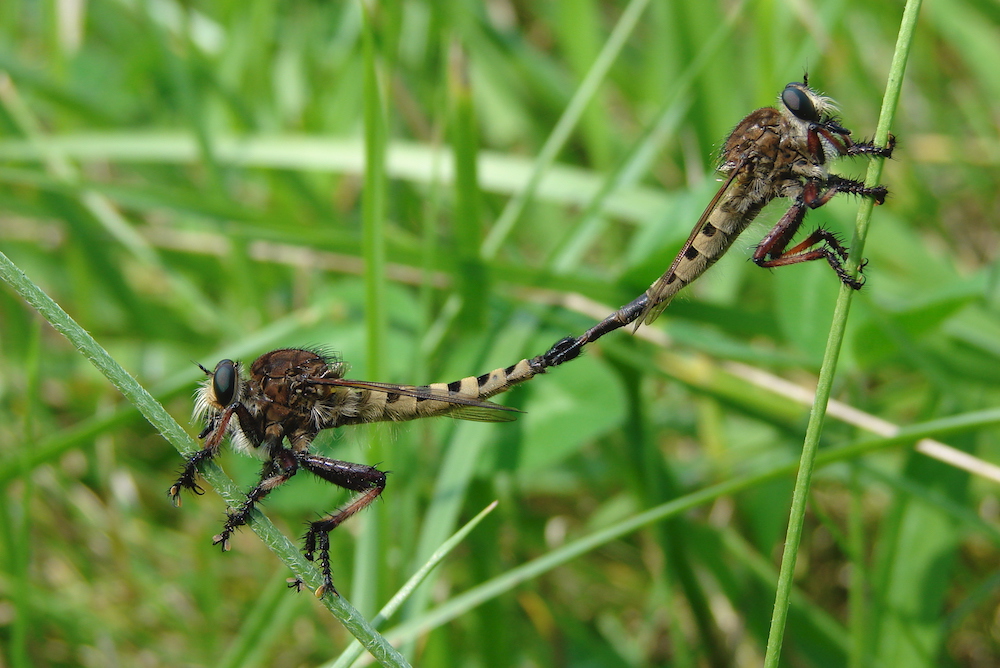
Flies, Midges, and Mosquitoes
Diptera (“two-wing”) is perhaps a less glorious order because most people don’t find flies, midges, and mosquitoes to be particularly charismatic. One fly that you might have seen on the trail is the robber fly. Their body is longer than a house fly and usually striped black and silver. They’re super fast predators with voracious appetites, but they’ll usually hang out on the ground until you get pretty close, then they’ll fly a short distance away.
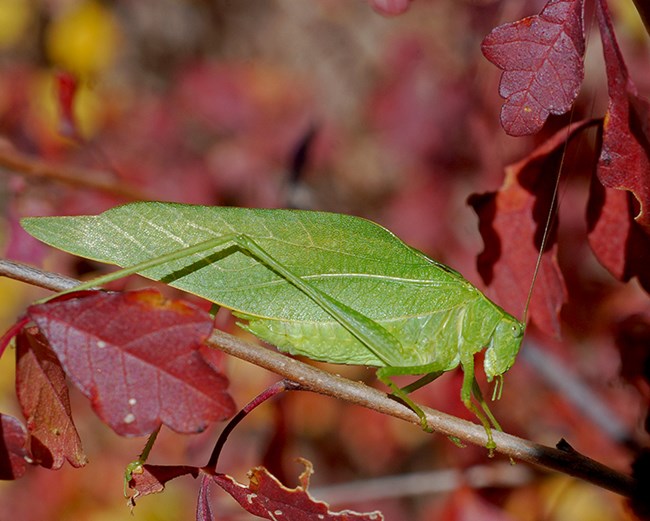
Crickets and Grasshoppers
Orthoptera (“straight-wing”) is the order for crickets and grasshoppers. Their large hind legs are usually used for impressive jumping! Some orthopterans, however, also have modified front legs for digging and use their big back legs to push dirt. Jerusalem crickets and mole crickets can sometimes frighten an unsuspecting gardener digging around their yard. Katydids look like bright green leaves, but with legs and antennae.
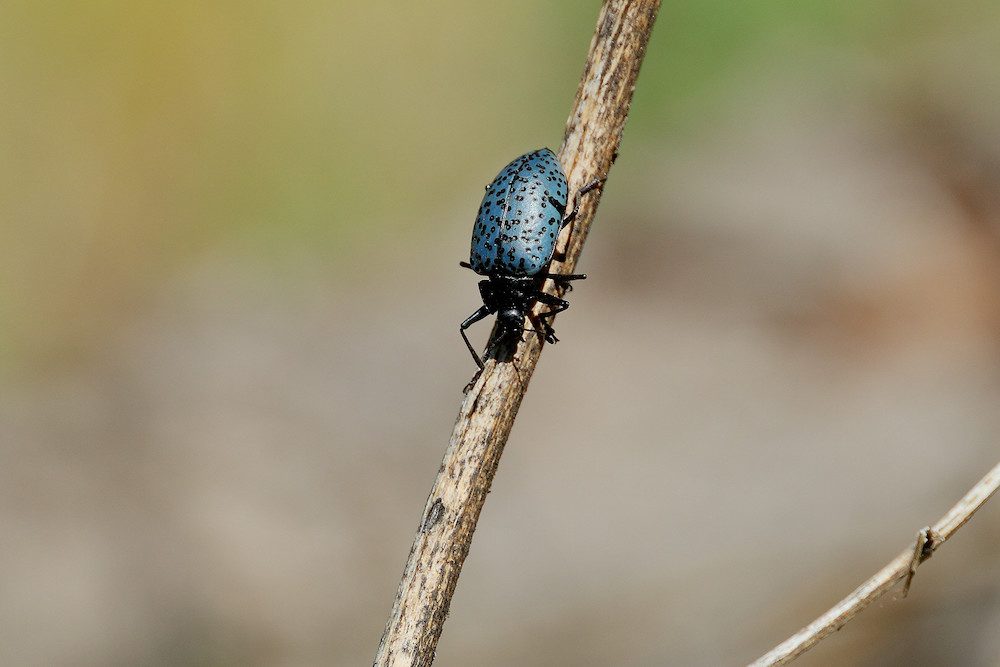
Highlights of the Pajarito Plateau
An article on insects wouldn’t be complete without introducing some of the less common, but perhaps more exciting, insects on the Pajarito Plateau. Snakeflies are special enough to have their very own order (Raphidioptera, or “needle-wing”). They have a long, snake-like neck and females have a long ovipositor that may look like a stinger, but all snakeflies are harmless to humans.
You might have come across pleasing fungus beetles while hiking in the Jemez Mountains. These bright blue, bulbous beetles feed on mushrooms and fungus and often pupate on the underside of rocks or downed logs. They aren’t necessarily rare, but they are fun to watch and handle. The last insect we’ll highlight is the antlion (order Neuroptera, or “veined-wing”). They are neither an ant, nor a lion! Larval antlions do eat ants, capturing them using a funnel-shaped trap in sand or soil. Adult antlions look very different from the larval stage.
We’ve mentioned a few common insects here, but spring and summer are great times to get outside and see what insects you can find! Slow down on the trail and look closely at wildflower blooms, tree bark, leaf piles, sand, or dirt. You’re sure to find an insect that catches your eye. Spend a little time to note their behavior, color, and shape, then take a quick picture to help you identify it later.
Your subject is one of approximately ten quintillion (10,000,000,000,000,000,000) individual insects alive on Earth!

You are all doing a great job!
Great article Beth! Your lifelong love of bugs is obvious…Gene Kritsky would be proud. Can’t wait to visit PEEC and the Plateau again.